Pull Start or Kick Start
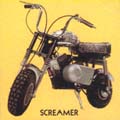
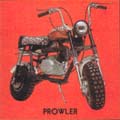
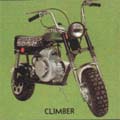
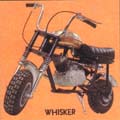
The choice between a pull start and kick start for a minibike depends on personal preference and the specific requirements of the minibike.
- Convenience: Pull starts are generally considered more convenient as they require less physical effort compared to kick starts. They typically involve a pulling motion using a handle or cord to start the engine.
- Simplicity: Pull starts are relatively simple and straightforward to use, making them more beginner-friendly. They require less technique and physical coordination.
- Accessibility: Pull starts are usually easier to access and use, especially in situations where there may be limited space for a full leg kick or if the rider has limited mobility.
- Reliability: Kick starts are often seen as more reliable and less prone to mechanical issues. They don't rely on a recoil mechanism like pull starts, which can sometimes malfunction or wear out.
- Independence: Kick starts don't require an external power source, such as a battery, to operate. This can be advantageous in situations where the battery is dead or unavailable.
- Aesthetics: Some riders prefer the aesthetic appeal of a kick start, as it can give the minibike a classic or vintage look. It adds a nostalgic touch and can enhance the overall visual appeal of the bike.
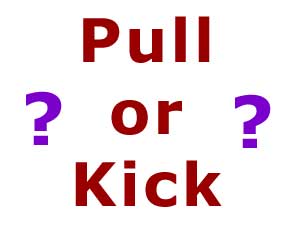
Consider factors such as convenience, reliability, ease of use, and the overall aesthetic you desire for your minibike. Or, simply take whatever you get. The starting method may not be important to you since each has its advantages and drawbacks.
Can I Get Hurt Starting a Minibike?
Using a pull start on a minibike is generally considered to be a low-risk activity when it comes to potential back injuries. However, it's important to maintain proper posture and use appropriate body mechanics to minimize the risk of any strain or injury. Here are some tips to keep in mind:
- Use a Stable Stance: Stand with your feet shoulder-width apart and maintain a stable base of support. This helps ensure good balance and stability while pulling the starter cord.
- Engage Your Core Muscles: Before pulling the starter cord, engage your core muscles to provide support and stability to your back. This can help distribute the load and reduce the strain on your back muscles.
- Use Your Leg Muscles: Instead of relying solely on your upper body strength, involve your leg muscles in the pulling motion. Bend your knees slightly and use a controlled, smooth pulling motion with your arms and legs working together.
- Avoid Jerky Movements: Pull the starter cord in a smooth, controlled manner without sudden jerks or excessive force. This helps minimize the risk of sudden strain or injury to your back.
- Take Breaks if Needed: If you feel any discomfort or strain in your back during the pulling process, take breaks and rest as needed. Listen to your body and avoid pushing through pain or discomfort.
Remember, everyone's physical condition and limitations can vary, so it's important to assess your own capabilities and consult with a healthcare professional if you have any concerns about your back or physical fitness. Additionally, following proper maintenance procedures and ensuring the minibike's engine is in good working condition can reduce the effort required for starting, making it easier on your back.
Now how about the kick starter? There is a potential for injury when kick starting a minibike, but with proper technique and caution, the risk can be minimized. Here are some tips to help reduce the likelihood of injury:
- Proper Footwear: Wear sturdy and closed-toe footwear, such as boots, that provide protection and grip. Avoid wearing sandals or other footwear that may increase the risk of slipping or getting caught during the kick.
- Stable Ground: Ensure that you are on stable and level ground when kick starting the minibike. Avoid loose or slippery surfaces that could cause you to lose your balance.
- Balanced Stance: Stand with one foot on the ground and the other foot positioned to kick-start the minibike. Maintain a stable and balanced stance to prevent tipping over or losing control.
- Firm Grip: Hold the minibike's handlebars firmly with both hands to maintain control during the kick. A strong grip helps prevent the handlebars from turning suddenly and causing a loss of balance.
- Controlled Kick: Use a smooth and controlled kicking motion rather than a forceful or jerky kick. Aim to provide a steady and even force to turn over the engine.
- Be Mindful of Compression: Minibikes with high compression engines may require more force to kick-start. Take this into account and be prepared for the resistance when initiating the kick.
- Practice and Familiarity: If you are new to kick starting a minibike, take the time to practice and become familiar with the technique. It may take a few attempts to find the right balance, rhythm, and force required for your specific minibike.
Always exercise caution and be aware of your surroundings when kick starting a minibike. If you have any concerns about your physical ability or the specific minibike you are working with, it's advisable to seek guidance from experienced riders or professionals. They tend to be more forgiving than a full size motorcyle, but you never know...
Enjoy the website...
About AMB
AMB is a minibike fan site dedicated to minibikes of the 1960's and 70's. We appreciate minibikes from the all the manufacturers of the time period like Arctic Cat, Rupp, Trail Horse, Sears minibikes, Suzuki minibikes, MTD minibikes, Bronco minibikes, Benelli, Manco, Kawasaki minibikes, and Ski-Wee.
See Also: Pull or Kick Start | Twist or Thumb Throttles | Minibike Articles | Minibike Lifestyle | The Minibike Handlebar




